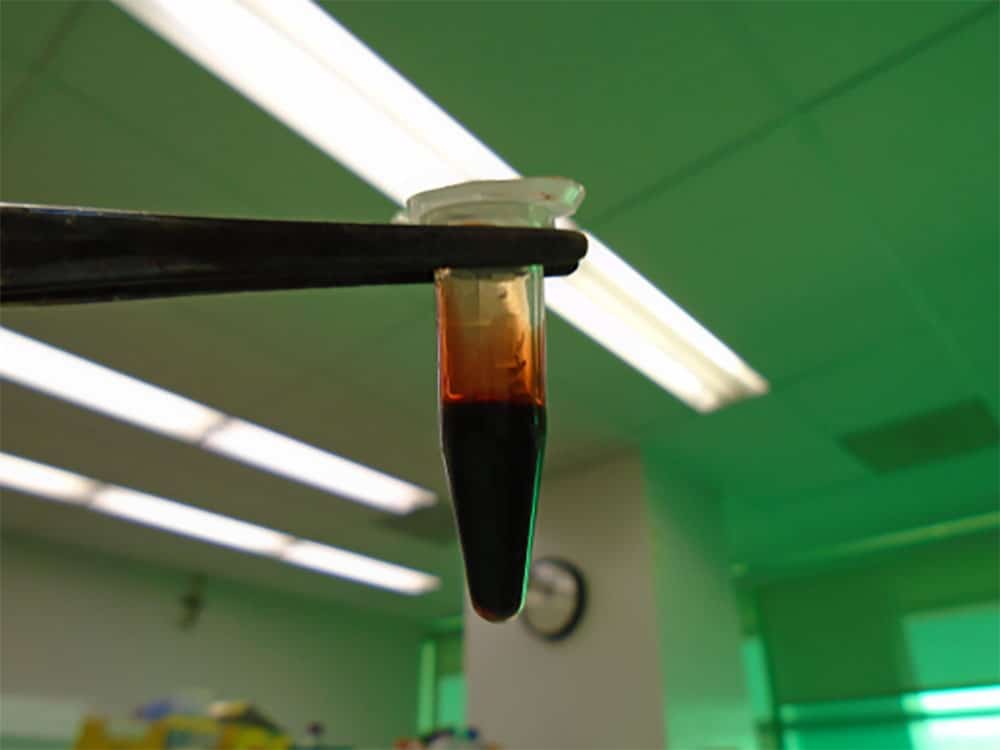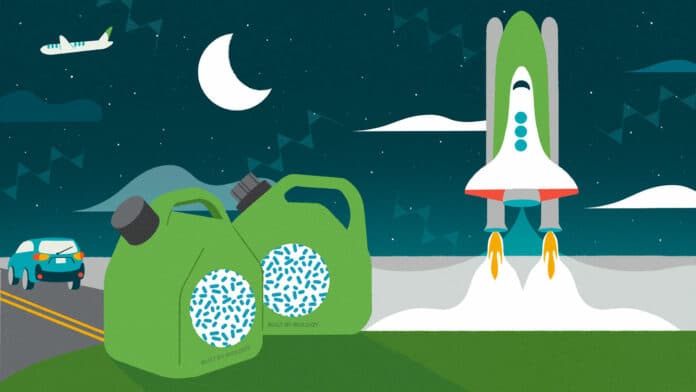Freeing the global economy from its dependence on petroleum is key to slowing down the pace of climate change. Energy-demanding applications like rocketry, aviation, and shipping are fueled with petroleum-derived hydrocarbons that are difficult to replace.
Now, a group of biofuel experts led by Lawrence Berkeley National Laboratory (Berkeley Lab) took inspiration from an extraordinary antifungal molecule mode by Streptomyces bacteria to develop a totally new type of fuel that has projected energy density greater than the most advanced heavy-duty fuels used today, including the rocket fuels used by NASA.
The new fuel molecules are called POP-FAMEs (for polycylcopropanated fatty acid methyl esters). Polycylcopropanated molecules contain multiple triangle-shaped three-carbon rings that force each carbon-carbon bond into a sharp 60-degree angle. The potential energy in this strained bond translates into more energy for combustion than can be achieved with the larger ring structures or carbon-carbonchains typically found in fuels.
The researchers identified natural cyclopropane-producing bacteria in a Streptomyces family, then copied their newly arranged gene cluster into a more “tame” relative. The resulting fatty acids contain up to seven cyclopropane rings chained on a carbon backbone, earning them the name fuelimycins. In a process similar to biodiesel production, these molecules require only one additional chemical processing step before they can serve as fuel.

Collaborators at Sandia National Laboratories used computer simulations to estimate how the compounds would perform compared to conventional fuels. The simulation data suggested that the new biofuel would be safe and stable at room temperature and would have an energy density of more than 50 megajoules per liter (MJ/L) after chemical processing. That’s a huge increase over regular gasoline, which has a value of 32 MJ/L, while JetA, the most common jet fuel, and RP-1, a popular kerosene-based rocket fuel, have around 35 MJ/L.
The increased energy density could help vehicles go farther on a single tank. In rocket launches, it could reduce the amount of fuel needed, saving more space and weight for cargo. In addition, producing the fuels from bacteria cuts right down on their environmental impact.
“This biosynthetic pathway provides a clean route to highly energy-dense fuels that, prior to this work, could only be produced from petroleum using a highly toxic synthesis process,” said project leader Jay Keasling. “As these fuels would be produced from bacteria fed with plant matter – which is made from carbon dioxide pulled from the atmosphere – burning them in engines will significantly reduce the amount of added greenhouse gas relative to any fuel generated from petroleum.”
Since publishing their proof-of-concept paper, the scientists have begun work to increase the bacteria’s production efficiency even further to generate enough for combustion testing. They are also investigating how the multi-enzyme production pathway could be modified to create polycyclopropanated molecules of different lengths.
“We’re working on tuning the chain length to target specific applications,” said Eric Sundstrom, an author of the paper. “Longer chain fuels would be solids, well-suited to certain rocket fuel applications, shorter chains might be better for jet fuel, and in the middle might be a diesel-alternative molecule.”
meta: Berkeley Lab researchers have developed a new class of energy-dense biofuels based on one of nature’s most unique molecules.
